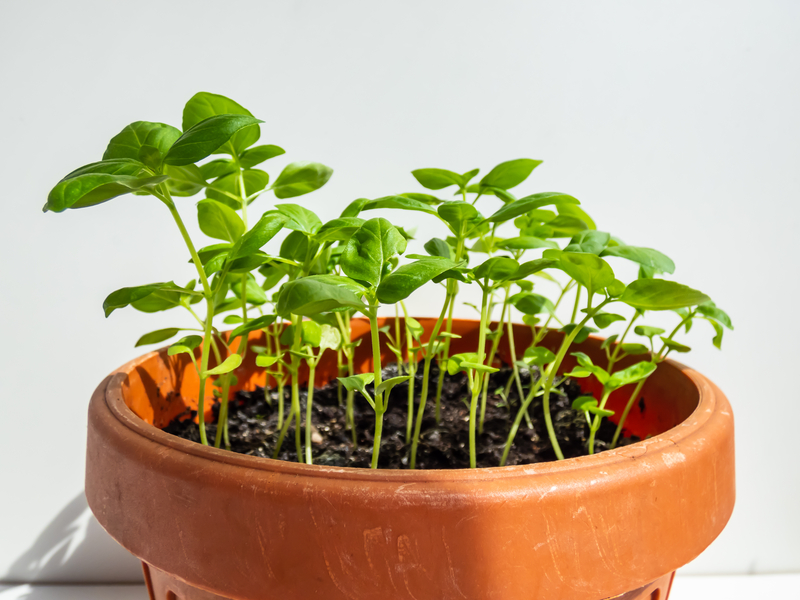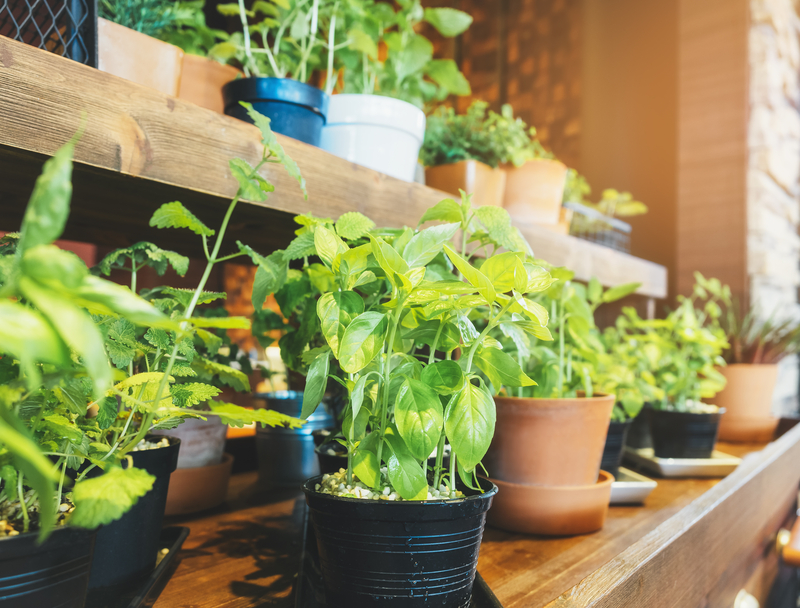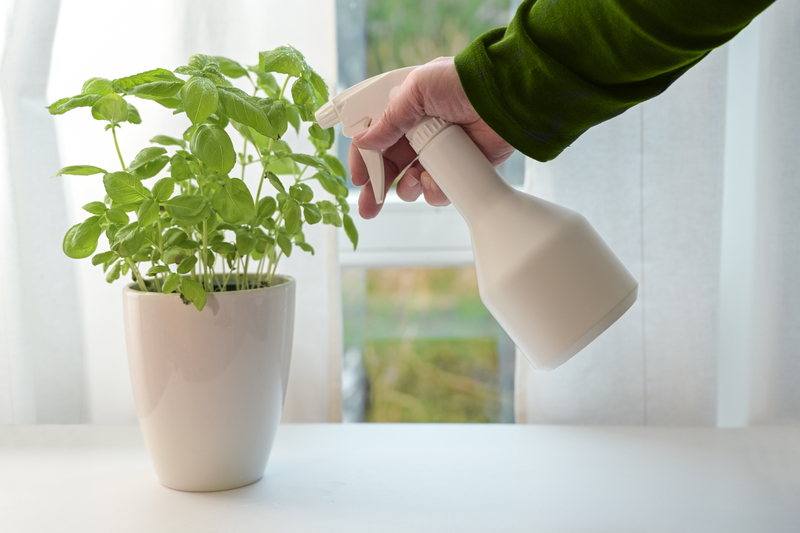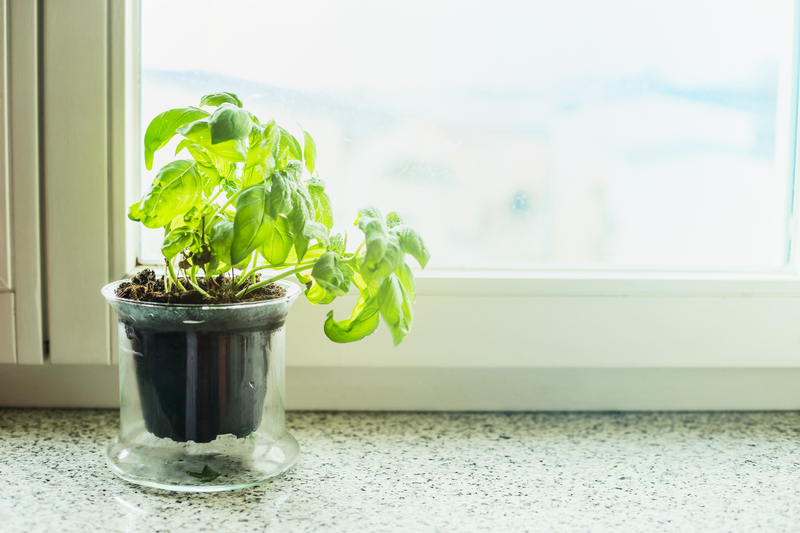There’s nothing quite like reaching over to your kitchen windowsill to snip some fresh basil leaves for your homecooked meal. A sprig of fresh herbs can make all the difference! And basil plants genuinely are the perfect addition to any home herb garden.
If you aren’t much of a cook, basil can make for a cheerful house plant too. Not only is this popular herb edible, but it smells great and adds a beautiful pop of green to your home.
But keeping herb plants such as basil (also known as Ocimum Basilicum) alive for a long time can be tricky. Here are some of our best tips to help keep your indoor herb garden alive so you can stop worrying about gardening and focus on cooking (and eating) instead!
How Do you Keep Potted Basil Alive?
Basil plants usually come in a small pot from the store, but basil likes to have space! Repot your basil into a larger pot when you bring it home. If you are transplanting more than one basil plant in a pot or garden container, be sure to allow enough spacing between plants. Give each one its room to grow. Space them out by at least several inches.
Another great way to help keep your basil plant alive is to harvest it often! Basil does best with frequent pruning, which is excellent news for anyone who likes to eat basil! The more you harvest basil, the more it is encouraged to put out new leaves.
It is also essential to cut off any flower buds as soon as they start forming. Flowering, also known as bolting, causes the basil plant to turn bitter. It will still be edible, but it probably won’t taste any good for cooking.
Also, be careful not to harvest too many leaves off of your new basil plant right away. If you transplant your herb, give it a couple of weeks to get established in the unique pot before doing a lot of harvesting. Too much trimming right away can cause the plant too much stress and decrease its chance of long-term survival.
Can a Basil Plant Survive Indoors?
Yes, but the biggest challenge with basil plants is wilting. Wilting indicates that the plant is under stress. Wilting leaves are also unpleasant for culinary purposes. No one wants to cook with wimpy basil!
How Much Water Does a Basil Plant Need?
It is essential to keep the soil moist regularly but not soaked. Monitor the water levels in the soil daily. Most plants like to get a total of an inch of water every week. Many people find that they have to water their basil plants as often as every two days!
If your basil plant is wilting, it is likely an issue with water. Basil is not tolerant to water stress, so that it can be susceptible to underwatering and overwatering.
What Type of Soil and Pot Work Best?
To help reduce water stress, be sure to pot your basil plant with high-quality potting soil that has good drainage. Also, use a pot that has drainage holes. Making sure your basil plant has good drainage will help prevent it from wilting or rotting.
Does Basil Plants Need Direct Sunlight?
Basil enjoys a few hours of full sun per day if the plant does not get too hot. Your indoor basil plant will do best in a sunny windowsill that gets six to eight hours of sunlight every day. A bright countertop by a window or a closed porch works excellent too.
If you do not get that much direct sunlight inside your home, basil plants will also do well under fluorescent grow lights. Place your plant under a lamp for up to twelve hours per day.
Basil plants can also wilt if they get too much direct sunlight or if they get too hot. If water is not the cause of the wilting, your basil might be too hot!
Do I Cut Basil from the Top or Bottom?
When harvesting basil or pruning your basil plant, it is best to trim the plant from the top down. If you pick a few leaves at a time, you can choose from anywhere on the plant. When picking, remember that it is better to remove just a few leaves at a time. Try not to remove an entire stem.
But if you want to harvest a large amount of basil, be sure to trim your basil from the top of the plant down. This harvesting will encourage the plant to put out new leaves. It will also enable the plant to grow bushier and become whole.
Each place where you pick or cut a leave off will put out new growth with even more new leaves! How cool is that?
Different Types of Basil
In American kitchens, sweet basil, also known as Italian basil, is the most common variety. Sweet basil is popular to use in recipes like pesto or spaghetti sauce. Sweet basil is what most people probably think of when they think of basil. Sweet basil plants are prevalent in the United States. They are in the produce section of many grocery stores and almost any garden center.
Other types of basil include lemon basil, Greek Columnar basil, Thai basil, purple basil, holy basil, cinnamon basil, and more. All varieties can be great choices to grow indoors.
So if you like to cook a lot, try keeping a fresh basil plant in your kitchen instead of dried spices! They are simple plants to take care of, and nothing can compare to having fresh herbs in the kitchen year-round!
Conclusion – Basil Plant Care
In summary, basil plants are a perfect addition to any outdoor garden or indoor area. They are relatively easy to take care of, and they offer the ability to add green to some of your favorite dishes for a fresh taste. Not to mention that harvesting the leaves allows new ones to grow in their place, which is fantastic. Keeping your basil healthy will bring countless cooking opportunities in the future for you.
Similar Posts
How to Take Care of an Ivy Plant
Should Houseplants be Watered from the Top or Bottom?
How to Get Rid of Buds on Houseplants
Why Houseplants Leaves Turn Yellow
What are Good House Plants for Low Light?
How to Take Care of an Aloe Plant
How to Take Care of a Money Tree Plant
Ways to Take Care of a Jade Plant
Should Houseplants Be in Direct Sunlight?
How to Take Care of an Azalea Plant




